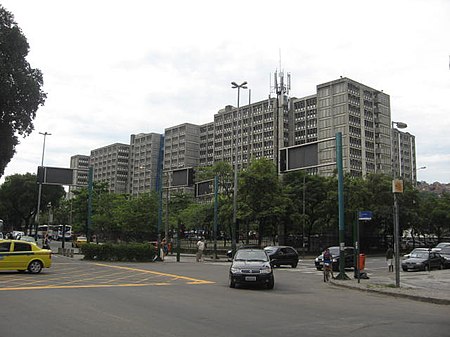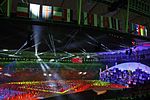Rio de Janeiro State University

Rio de Janeiro State University (UERJ; Portuguese: Universidade do Estado do Rio de Janeiro) is a public research university in the state of Rio de Janeiro, Brazil. It is one of the largest and most prestigious universities in the country. The university's law and medical schools are among the best in the nation (according to the Exame Nacional de Desempenho de Estudantes ranking and the Order of Attorneys of Brazil). Its Biology, Social Science, Nursing and Philosophy courses are also highly praised, as stated by Guia do Estudante.U.S. News & World Report elected UERJ as the 5th best university in Brazil, the 11th best university in Latin America and 464th in the world. Its main campus is called Francisco Negrão de Lima and is located in the Maracanã neighborhood of Rio de Janeiro city. Other campuses are located in Petrópolis, Nova Friburgo (Polytechnic Institute), Teresópolis, Duque de Caxias, Angra dos Reis, Resende, and São Gonçalo.
Excerpt from the Wikipedia article Rio de Janeiro State University (License: CC BY-SA 3.0, Authors, Images).Rio de Janeiro State University
Rua São Francisco Xavier, Rio de Janeiro Maracanã
Geographical coordinates (GPS) Address Phone number Website External links Nearby Places Show on map
Geographical coordinates (GPS)
| Latitude | Longitude |
|---|---|
| N -22.911111111111 ° | E -43.236111111111 ° |
Address
Universidade do Estado do Rio de Janeiro - Campus Maracanã
Rua São Francisco Xavier 524
20550-900 Rio de Janeiro, Maracanã
Rio de Janeiro, Brazil
Open on Google Maps








